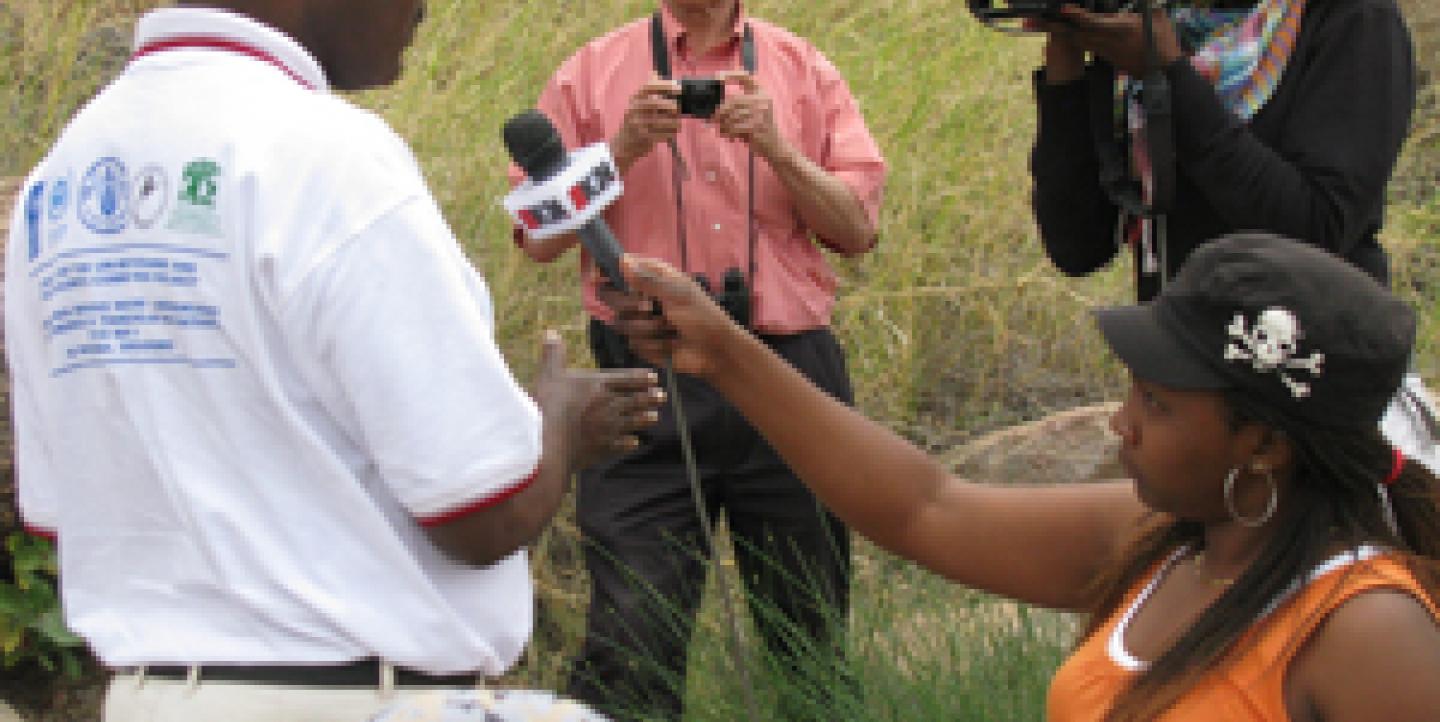An association in Kenya gives environment and science journalists in the country a platform for professional development and networking. The Kenya Environment and Science Journalists Association (KENSJA), formed in 2007, was recently admitted to the World Federation of Science Journalists (WFSJ).
In an interview with IJNet, Kenyan journalist and KENSJA chairman Ochieng' Ogodo spoke about the association. Ogodo was a 2008 regional winner for the Reuters-IUCN Media Awards for Excellence in Environmental Reporting, and has a distinguished international career as a science and environmental journalist. He has written for publications including The East African Standard, Biosafety News and Doctor News East Africa.
IJNet: Tell us about KENSJA. Why was KENSJA formed?
Ogodo: The Kenya Environment and Science Journalists Association (KENSJA), a non-political, not-for-profit professional association, draws its membership from practicing environment and science journalists in Kenya. It is a volunteer organization led by elected leaders who meet at least twice a year to conduct KENSJA business and formulate policies for its members. The organization is supported by member-paid dues and through partner organizations. One of the most important reasons for its founding was to bring together members, and get them to discuss and debate ideas and trends on where environment and science communication is going.

Could you tell us about KENSJA’s history?
KENSJA was seeded on February 2, 2007 in Nairobi by journalists who were attending the Commonwealth Press Union (CPU) Environmental Reporting Training Course. It was founded on the belief that journalists practicing environment and science journalism had no platform where they could share and talk about their own developments as journalists. However, it did not pick up immediately for various reasons. But in late 2008, some of the founders decided to revamp the organization and give it a new direction. This saw the entry of some of the most outstanding environment and science journalists in Kenya today. Since then it has been making dramatic strides.
Did any organization exist specifically for science journalists in Kenya prior to KENSJA?
There are several organizations dealing with specific areas, like health journalism. But until KENSJA came into existence, there was no association that truly represented science journalists in Kenya. The formation of KENSJA as an all encompassing national body for science journalists came after very careful evaluation. There are many associations of different types in the country, but ultimately their credibility is determined by how much support they have among journalists and the credentials of their members. What we are certain about is that up until the time KENSJA was formed, there was no single association that fully understood and strove to raise the profile of science journalism.
Since KENSJA’s inception in 2007, what has been the group’s impact?
In its short life, KENSJA has achieved tremendous impact, but a lot still needs to be done. It has grown from just a few members to 32 fully paid senior and upcoming member journalists today, but that’s still not that many. We have had training and collaborations with reputable organizations. We organized a capacity building workshop on climate change reporting with Panos London in Nairobi from August 21 to 27, 2009. From July 6 to 10, 2010, we collaborated and organized a climate change reporting workshop in Arusha, Tanzania. Attendees have produced some very interesting reportage on climate change. We also have members who hold senior editorial positions in the country's mainstream media, which means they can influence editorial content and act as role models for upcoming journalists.
How do you fulfill your three main goals -- firstly, improving the quality of environmental and science reporting?
We improve quality through capacity building, linking up journalist with relevant scientific institutions and encouraging them to write quality stories.
Promoting standards?
Here we also train them on how to build accurate, factual and balanced stories. In science reporting, the beauty of a story is reporting truthfully and accurately. Finances allowing, we intend to produce toolkits to promote this.
Supporting environmental and science journalists in Kenya?
We support them by linking them up with news sources. I have on several occasions responded to journalists looking for news sources and/or organisations to talk to while doing stories. Some of our collaborators have also sponsored journalists to go out in the field and do reporting. We also have a website -- currently under reconstruction -- where they post their stories. And to ensure quality we have one of the senior editors go through stories submitted for editing. We also keep an eye on the international scene and circulate links. We keep them informed of international opportunities where there are scholarships or fellowships.
Do science journalists in Kenya network through KENSJA?
Yes, through our website where we post association news, and through an annual general meeting we plan on holding this year. There is also the chairman’s brief sent out to members regularly.
You were recently admitted into the World Federation of Science Journalists (WFSJ). What will this mean for the future of KENSJA?
The admission to the WFSJ was one of the best things to have happened to KENSJA. We are now part of an excellent community of global science journalism. This will raise our profile in the global arena, and members will enjoy opportunities allowed by KENSJA being a member of the WFSJ. It will give us the opportunity to participate and make useful contributions in the global science journalism arena, which we are really enthusiastic about.
What are the biggest challenges facing science journalists in Kenya at present?
Lack of space for science stories, as some of the editors do not give them much thought. Some of the journalists still lack the capacity to understand the complex nature of science reporting, and the importance of writing both easy-to-read and factual stories. There also is the lack of financial resources. Most stories here are generated by correspondents who are paid per story and they end up earning much less than their counterparts in other areas like politics, business and sports. Their requests for facilitation to go out and do stories are considered last in their newsrooms.
What is your vision for the future of KENSJA?
My vision for KENSJA is that it will be a formidable outfit that gives environment and science journalists and communicators a platform for professional development, and local and international networking. We want KENSJA to be a professional body that will make effective contributions to sustainable use of the environment and science.
For more information, visit WFSJ or e-mail Ogodo at ochiengogodo@yahoo.com. A new KENSJA website will be available soon.


